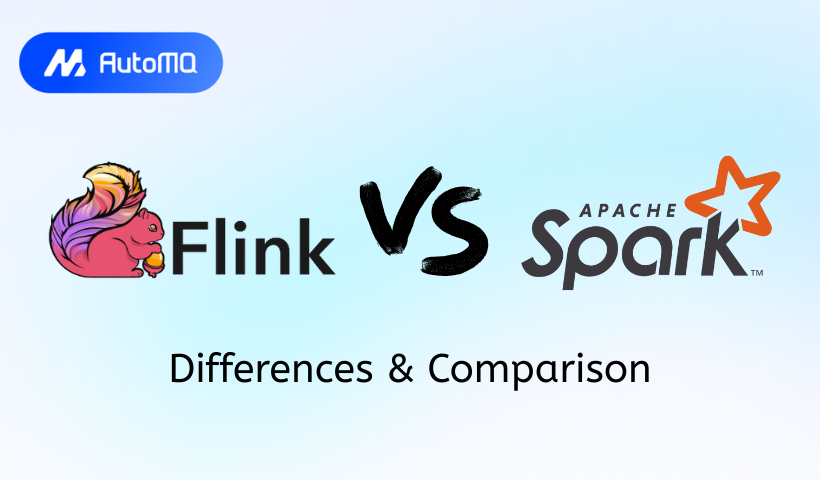Overview
Apache Flink and Apache Spark are both powerful open-source distributed processing frameworks designed for big data workloads. While they share some similarities, they have distinct architectures, processing models, and strengths that make them suitable for different use cases. This blog post provides a comprehensive comparison to help you understand their key differences and make informed decisions.
Core Concepts and Architecture
Apache Flink
Flink is a stream processing framework designed for high-performance, scalable, and stateful computations over both unbounded (streaming) and bounded (batch) data [1]. It processes data as true streams, meaning events are processed one by one as they arrive, enabling very low latency.
Key Architectural Components [2]:
JobManager : Coordinates the distributed execution of Flink applications. It's responsible for job scheduling, checkpoint coordination, and recovery.
TaskManager (Worker) : Executes the tasks of a dataflow, buffers and exchanges data streams. Each TaskManager runs as a JVM process and has a number of task slots, which are the smallest unit of resource scheduling.
Client : Submits jobs to the JobManager. It's not part of the runtime execution but is used for job preparation and submission.
Flink's architecture supports event-time processing, which allows for accurate results even with out-of-order data by using timestamps embedded in the data itself [3]. It also provides robust state management and exactly-once processing semantics through its checkpointing mechanism [4].
![Flink Cluster Overview [35]](https://static-file-demo.automq.com/6809c9c3aaa66b13a5498262/68f5ebc2f4aa6742a902e26e_67480fef30f9df5f84f31d36%252F685e63e8a838da75867dcdad_Er8o.png)
Apache Spark
Spark was initially designed for fast batch processing and later extended its capabilities to handle stream processing through micro-batching (Spark Streaming) and a more recent continuous processing mode (Structured Streaming) [5]. It's a unified analytics engine for large-scale data processing.
Key Architectural Components [6]:
Driver Program : The main program that runs the
main()function of the application and creates theSparkContext. It coordinates the execution of the job.Cluster Manager : An external service for acquiring resources on the cluster (e.g., Standalone, YARN, Kubernetes, Mesos).
Executors : Processes launched on worker nodes that run tasks and store data for the application. Each application has its own executors.
Worker Node : Any node that can run application code in the cluster.
Spark's core abstraction is the Resilient Distributed Dataset (RDD), an immutable, distributed collection of objects [7]. It also offers higher-level abstractions like DataFrames and Datasets, which provide optimized execution through the Catalyst optimizer and Tungsten execution engine [8].
![Spark Cluster Overview [36]](https://static-file-demo.automq.com/6809c9c3aaa66b13a5498262/69099bae56f41993cde53772_67480fef30f9df5f84f31d36%252F685e5351b05359450e093d4b_ldOy.png)
Processing Models: Streaming and Batch
The most fundamental difference between Flink and Spark lies in their approach to stream processing.
Streaming Data
Flink : Implements true stream processing. Data is processed event by event as it arrives, allowing for very low latencies, often in the sub-millisecond to millisecond range [9, 10]. This makes Flink highly suitable for applications with stringent latency requirements, such as real-time fraud detection or anomaly detection [11]. Flink treats batch processing as a special case of stream processing where the stream is bounded [12].
Spark :
Spark Streaming (DStreams) : Uses a micro-batch processing model. It collects data in small time intervals and processes these micro-batches together [5]. This inherently introduces latency equivalent to the batch interval.
Structured Streaming : Built on the Spark SQL engine, it offers a higher-level API. While it also defaults to a micro-batch execution model, it introduced a continuous processing mode to achieve lower latencies (as low as 1ms) for certain types of queries [13, 14]. However, this continuous mode has limitations compared to Flink's native streaming.
In benchmarks and real-world scenarios, Flink generally demonstrates lower latency in streaming applications compared to Spark's micro-batch approach [15, 16]. Flink's pipelined execution allows for immediate processing, while Spark's batching incurs inherent delays [17].
Batch Data
Flink : Handles batch processing as a special case of its streaming engine. It can process bounded datasets efficiently using the same runtime [1].
Spark : Was originally designed for batch processing and excels in this area. Its RDD abstraction and in-memory processing capabilities allow for significantly faster batch processing compared to traditional MapReduce [8]. Spark SQL and DataFrames provide highly optimized execution for batch workloads.
For pure batch workloads, Spark often has an edge due to its mature batch processing capabilities and optimizations. However, Flink's unified approach to batch and stream processing can simplify architectures that require both.
State Management and Fault Tolerance
Stateful stream processing is crucial for many applications, and both frameworks provide mechanisms for managing state and ensuring fault tolerance.
State Management
Flink :
Offers first-class support for stateful stream processing. It provides fine-grained control over state, including keyed state and operator state [4].
Supports various state backends (e.g., in-memory, file system, RocksDB) to manage potentially very large states efficiently [4]. RocksDB allows for state sizes exceeding available memory by spilling to disk.
Features advanced state management capabilities like incremental checkpointing and savepoints [11]. Savepoints are manually triggered snapshots that can be used for application updates or migrations [13].
Spark :
Structured Streaming manages state for stateful operations (like aggregations or joins) using a versioned key-value store [13].
By default, state is stored in memory within executors and checkpointed to a fault-tolerant file system (like HDFS). RocksDB can also be used as a state store provider to handle larger states that don't fit in JVM memory [13].
Shares memory with the executor for in-memory state storage, which can lead to OutOfMemory issues if not managed carefully. The same thread handling state snapshots and purging can cause processing delays with large states [18].
Flink is often considered to have more flexible and robust state management, especially for complex streaming applications with large state requirements [10, 19].
Fault Tolerance and Consistency
Flink :
Achieves fault tolerance using a lightweight, distributed snapshotting mechanism based on the Chandy-Lamport algorithm [18, 20]. These checkpoints capture the entire state of the application (including input offsets and operator states) consistently.
Guarantees exactly-once processing semantics for stateful operations, meaning each event affects the state precisely once, even in the presence of failures [4]. This is critical for data integrity.
Spark :
RDDs achieve fault tolerance through lineage, allowing lost partitions to be recomputed [7].
For Spark Streaming (DStreams), data is often written to a Write-Ahead Log (WAL) for recovery [18].
Structured Streaming provides exactly-once semantics for many sources and sinks when used with replayable sources and idempotent sinks [13]. Recovery from failures involves reloading state from checkpoints and reprocessing data from the point of failure.
Netflix conducted Chaos Monkey testing on Spark Streaming, highlighting its resilience but also noting potential for data loss with unreliable receivers if write-ahead logs weren't used (which had a performance impact).
Both frameworks provide strong fault tolerance, but Flink's checkpointing mechanism is often highlighted for its efficiency and low overhead in continuous streaming scenarios [12].
Windowing
Windowing is essential for processing infinite streams by splitting them into finite chunks for computation.
Flink : Offers a rich set of windowing capabilities [18]:
Time-based windows : Tumbling (fixed, non-overlapping), Sliding (fixed, overlapping).
Count-based windows : Tumbling, Sliding.
Session windows : Group events by activity, defined by a gap of inactivity.
Global windows : A single window for all data, requiring custom triggers.
Supports event-time and processing-time semantics for windows. Event-time processing allows for accurate analysis of data based on when events actually occurred, using watermarks to handle out-of-order events [3]. Flink's watermarking is very flexible.
Spark :
Spark Streaming (DStreams) provides time-based tumbling and sliding windows [5].
Structured Streaming also supports event-time windowing with watermarks to handle late data [13]. However, data arriving after the watermark is typically dropped [15].
Spark's windowing is primarily time-based and considered less versatile than Flink's, especially for complex event processing scenarios requiring custom window logic or session windows [18, 20].
Flink's windowing capabilities are generally more comprehensive and flexible, particularly for event-time processing and handling complex streaming patterns [19].
Performance and Scalability
Flink :
Designed for low latency and high throughput in streaming. Its pipelined execution and custom memory management (operating on binary data directly, reducing GC overhead) contribute to its performance [17, 23].
Scales horizontally to thousands of nodes [11].
Operator chaining and a cost-based optimizer for batch tasks enhance efficiency [20].
Spark :
Known for high throughput in batch processing. In-memory caching (RDDs/DataFrames) and optimizations like Tungsten and Catalyst provide significant speedups [8].
Spark Streaming's micro-batching can achieve high throughput but at the cost of some latency. Structured Streaming's continuous mode aims for lower latency [14].
Scales horizontally and is widely deployed on large clusters.
For streaming, Flink often leads in low-latency performance [16]. For batch processing, Spark's optimizations and mature ecosystem make it very performant. Performance is highly dependent on the specific workload, configuration, and hardware. Some benchmarks have shown Flink outperforming Spark in streaming throughput and latency, especially after correcting for configuration issues in initial benchmark setups [15]. An older Yahoo benchmark (2015) showed Flink and Storm outperforming Spark in latency for a specific streaming application [24].
Ecosystem and Integration
Flink : Has a growing ecosystem with connectors for many common storage systems and message queues (Kafka, HDFS, S3, Elasticsearch, JDBC, etc.) [2, 25]. It integrates with libraries like FlinkML (machine learning) and Gelly (graph processing) [22].
Spark : Boasts a very mature and extensive ecosystem. It integrates seamlessly with the Hadoop ecosystem (HDFS, YARN, Hive) and has a vast array_of connectors [8, 23]. Spark includes well-established libraries like MLlib (machine learning) and GraphX (graph processing) [5].
Spark's ecosystem is generally considered broader and more mature due to its longer tenure and wider adoption, especially in enterprise settings [19, 20].
Use Cases
Apache Flink is often preferred for:
True real-time analytics : Applications requiring very low latency (e.g., fraud detection, anomaly detection, real-time recommendations) [11].
Complex Event Processing (CEP) : Identifying patterns in streams of events [22].
Stateful stream processing at scale : Applications that need to maintain and update large amounts of state over continuous data streams [4].
Event-driven applications [3].
Data pipelines requiring exactly-once semantics and high data consistency [4].
Apache Spark is often preferred for:
Large-scale batch processing and ETL : Its original strength, where it excels in performance and ease of use [7].
Machine learning and advanced analytics : With MLlib and its strong Python support, it's a popular choice for data science workloads [5].
Interactive SQL queries : Spark SQL provides a powerful engine for ad-hoc querying of large datasets [8].
Unified batch and stream processing : When organizations want a single engine for both, and near real-time is acceptable for streaming needs [8].
Log processing and analysis [7].
Uber, for example, has used both Flink and Spark. They leveraged Flink for very low-latency applications and Spark (including Spark Streaming) for broader ETL and analytics, even developing a Kappa architecture using Spark to unify streaming and backfill workloads [31, 32]. Netflix also uses both, including Flink for messaging/streaming and Spark for data processing [33].
Conclusion
Both Apache Flink and Apache Spark are powerful distributed processing frameworks, but they cater to different primary strengths.
Choose Apache Flink if:
Your primary requirement is true real-time stream processing with very low latency.
You need advanced state management and flexible windowing for complex event processing.
Exactly-once semantics and high data consistency are critical for your streaming application.
Choose Apache Spark if:
Your focus is on high-throughput batch processing and ETL.
You need a unified platform for batch, interactive SQL, machine learning, and graph processing, and near real-time is sufficient for streaming.
Your team has strong Python or R skills and leverages libraries like MLlib extensively.
A mature, extensive ecosystem and broader community support are key factors.
The lines between them are blurring as both frameworks evolve. Spark is improving its streaming capabilities with continuous processing, and Flink is enhancing its batch processing and high-level APIs. The best choice often depends on the specific requirements of your project, existing infrastructure, team expertise, and the primary processing paradigm (stream-first vs. batch-first). For many organizations, the answer might even be to use both for different workloads [34].
If you find this content helpful, you might also be interested in our product AutoMQ. AutoMQ is a cloud-native alternative to Kafka by decoupling durability to S3 and EBS. 10x Cost-Effective. No Cross-AZ Traffic Cost. Autoscale in seconds. Single-digit ms latency. AutoMQ now is source code available on github. Big Companies Worldwide are Using AutoMQ. Check the following case studies to learn more:
Grab: Driving Efficiency with AutoMQ in DataStreaming Platform
Palmpay Uses AutoMQ to Replace Kafka, Optimizing Costs by 50%+
How Asia’s Quora Zhihu uses AutoMQ to reduce Kafka cost and maintenance complexity
XPENG Motors Reduces Costs by 50%+ by Replacing Kafka with AutoMQ
Asia's GOAT, Poizon uses AutoMQ Kafka to build observability platform for massive data(30 GB/s)
AutoMQ Helps CaoCao Mobility Address Kafka Scalability During Holidays
JD.comx AutoMQ x CubeFS: A Cost-Effective Journey at Trillion-Scale Kafka Messaging
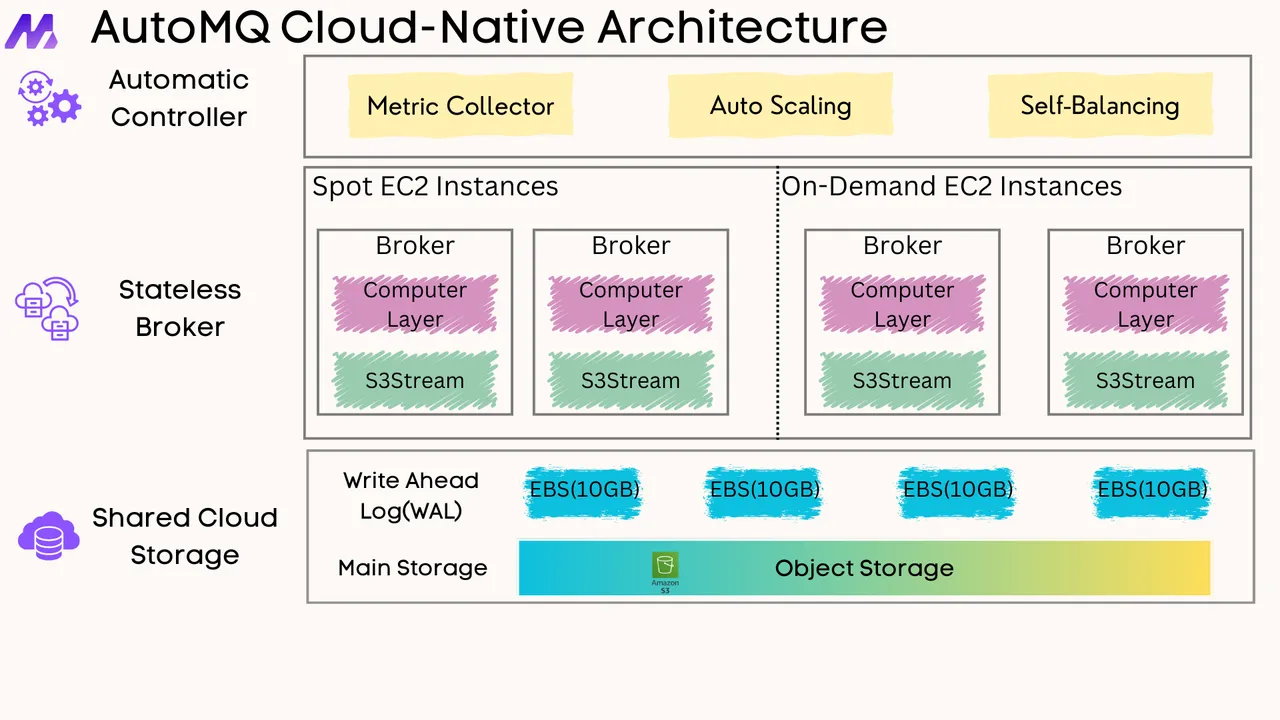





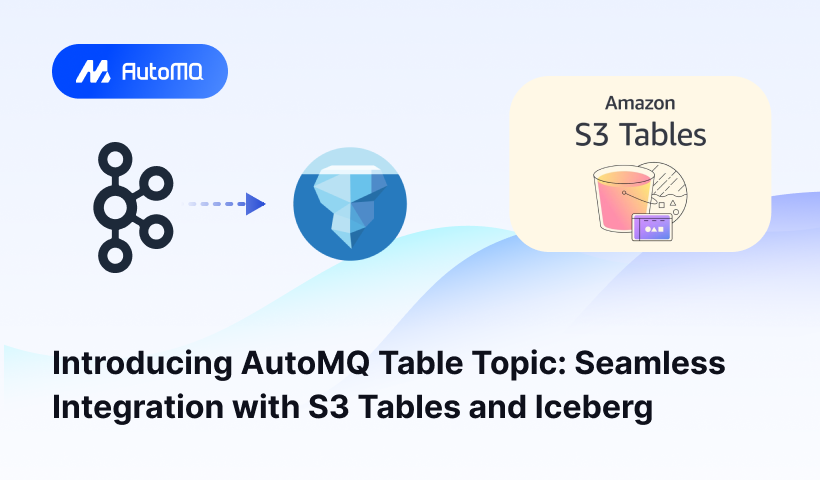
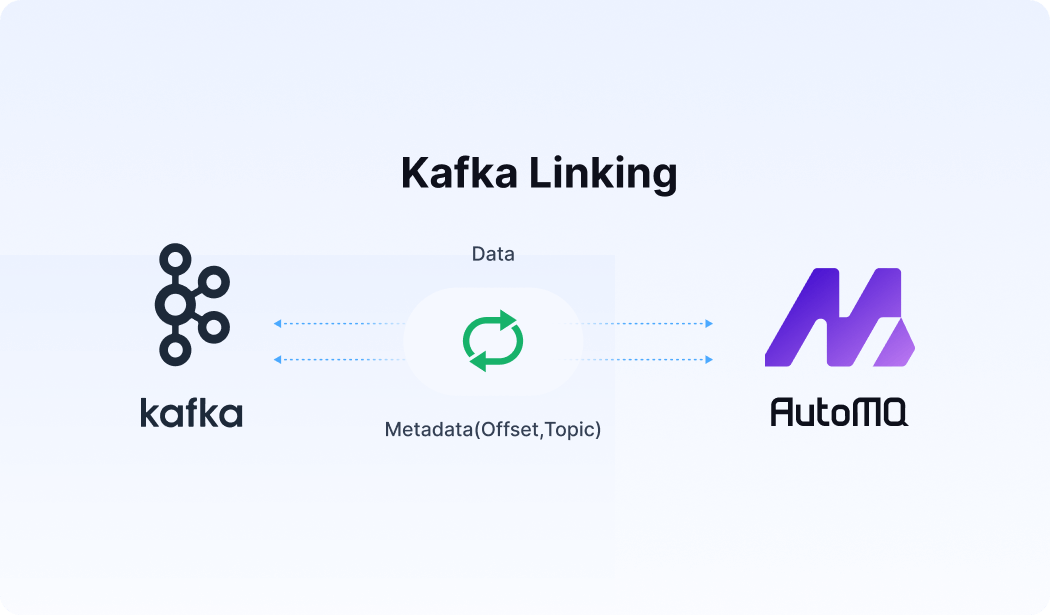




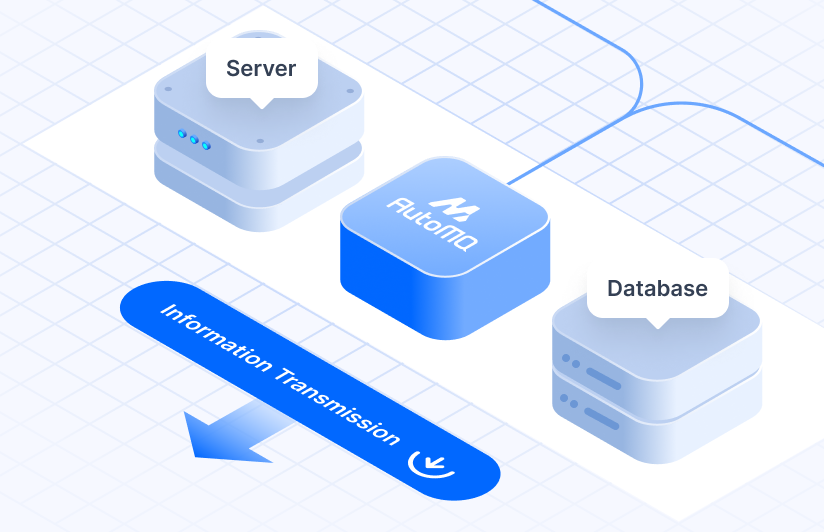



.png)
